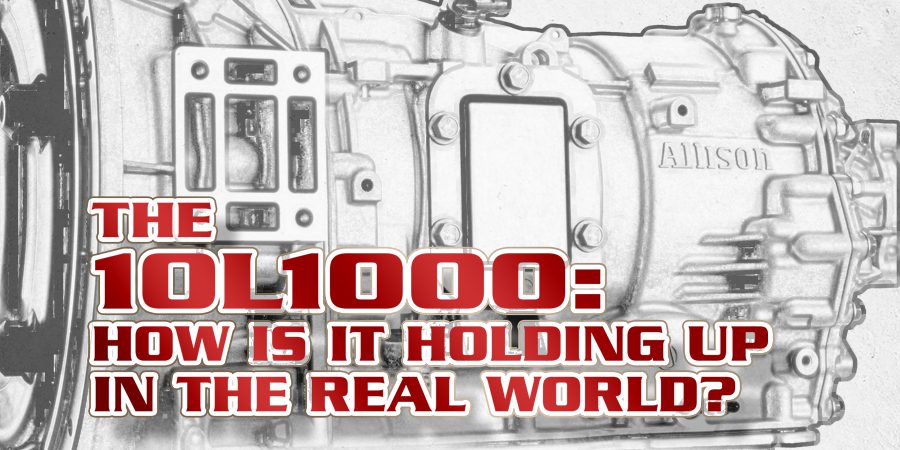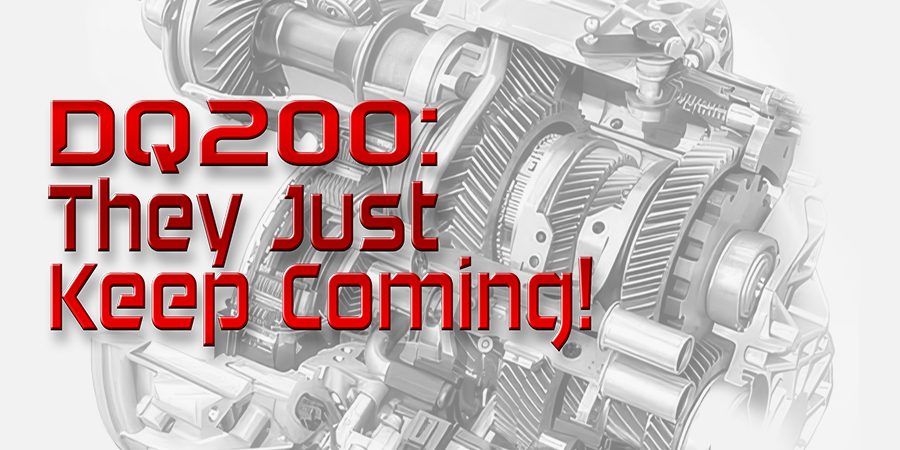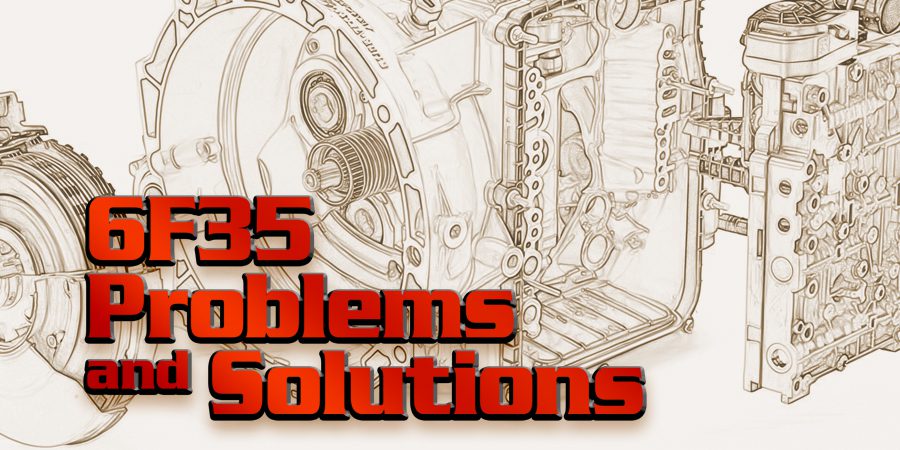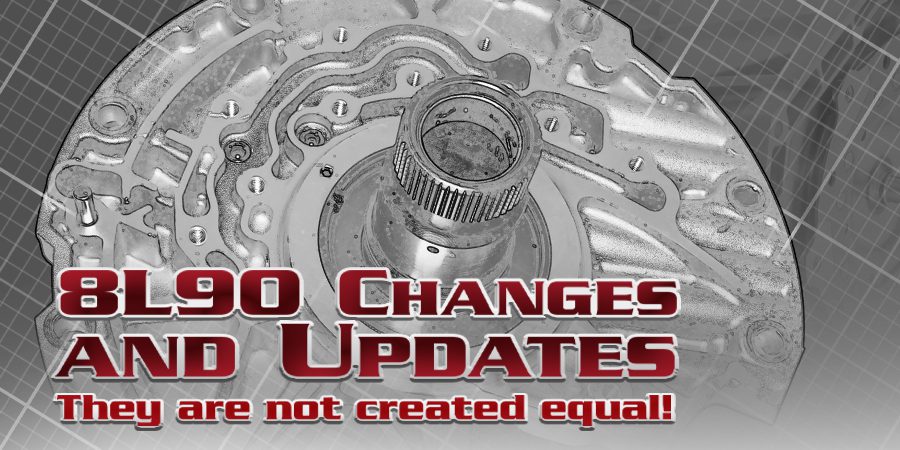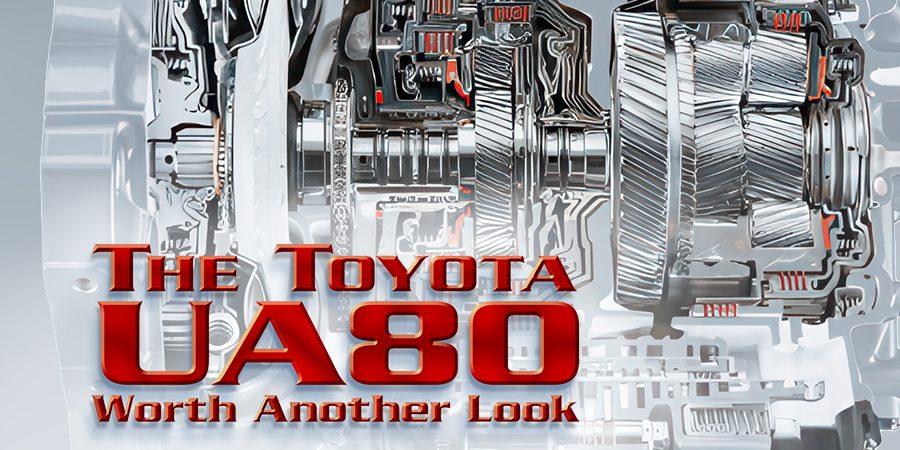Many articles and bulletins have been written on Ford’s rear-wheel drive 10-speed units. However, there is more to report. While the transmission has proven sturdy enough to withstand the brutal torque and horsepower of their Coyote and diesel engines, subtilities remain that can take these units to an early demise. Let’s recap what we know and investigate areas of concern inside the transmission that are coming to the forefront.
WHAT WE KNOW
These units have been coming into shops with common failures. Unfortunately, symptoms range from infrequent shift quality issues to failsafe operations. Adaptive strategies for powertrain management on the 10R series units often mask internal failures until they finally produce DTCs. Prior to DTCs, a customer complaint of an intermittent concern could point to problems inside the unit. Of course, a thorough diagnosis should be performed to eliminate any issues external to the transmission.
 Now, let’s recap areas of concern documented as items to check whenever we have one of these units apart on our bench. These items are summarized in a chart (Figure 1). A comprehensive test drive and a thorough inspection procedure during teardown will allow you to catch and repair the most common issues. However, this article brings up additional concerns that these units are experiencing.
Now, let’s recap areas of concern documented as items to check whenever we have one of these units apart on our bench. These items are summarized in a chart (Figure 1). A comprehensive test drive and a thorough inspection procedure during teardown will allow you to catch and repair the most common issues. However, this article brings up additional concerns that these units are experiencing.
VALVE BODY WEAR
The 10R series transmission uses a considerable amount of pressurized oil for full function. When you look at everything requiring pressure regulation, it’s obvious that overall pressure inside this unit is critical for proper operation.
Line pressure is used to apply driving clutches and brakes to allow power flow through the unit. The 10R transmission requires four components to be applied for power to be transmitted to the rear wheel. With ten forward ranges available to suit any driving condition, demand for consistent line pressure is critical for shift quality. Therefore, any wear or leaking hydraulic circuits will create drivability problems.

 The Line Pressure Control (LPC) and Torque Converter Clutch (TCC) accumulators are areas that wear in the valve body. While the pistons don’t wear much, the bores in the valve body do (Figure 2). Erratic shift quality and TCC apply, and release concerns are symptoms related to wear in these areas. Inspect, repair, and replace as needed to correct issues. There are aftermarket components available for repair through your soft parts supplier.
The Line Pressure Control (LPC) and Torque Converter Clutch (TCC) accumulators are areas that wear in the valve body. While the pistons don’t wear much, the bores in the valve body do (Figure 2). Erratic shift quality and TCC apply, and release concerns are symptoms related to wear in these areas. Inspect, repair, and replace as needed to correct issues. There are aftermarket components available for repair through your soft parts supplier.
The Casting Integrated Direct-Acting Solenoids (CIDAS) used for shift control are prone to failing mechanically. They use a Pulse Width Modulated (PWM) signal to mechanically move a control valve that directly feeds and exhausts a clutch. The typical shift overlap time is approximately 0.3 seconds. With such a small operation window, any mechanical compromise will cause a shift quality concern, which is usually felt as a harsh shift. Use the clutch apply chart to observe oncoming and off-going clutch transitions that coincide with a poor shift to isolate a mechanically faulty solenoid.
Finally, check for wear in all modulated valve bores. The LPC, TCC, TCC priority, and CIDAS bores are included. If the retaining clips for the CIDAS solenoids are worn, there is a chance that the bore closest to the valve where the solenoid seats could be worn. Repair or replace the valve body as needed.
INPUT SHAFT FAILURES
Although it looks simple and reliable, the input shaft is a piece of technology that could eat your lunch many times over if you don’t check it thoroughly. The myriads of cross-drilled feed holes, internal and external plugs, and sealing ring lands must be perfect for this unit to work as designed. With concentric shafts and feed holes, there is little room for error. Check each feed circuit to ensure no cross-feed into an adjacent passage and that the end plugs do not leak (Figure 3). Perform a final air check with the unit assembled to ensure no significant cross leaks. Note that the sealing rings need oil and heat to seal properly.
 End plugs and internal cross leaks between the C and F clutch feeds are becoming more common. Remember, if your shaft passes the leak test, you must change the sealing rings! You risk cross leaks even if the used rings look good. Special installation tools are extremely useful for successfully installing and sizing them.
End plugs and internal cross leaks between the C and F clutch feeds are becoming more common. Remember, if your shaft passes the leak test, you must change the sealing rings! You risk cross leaks even if the used rings look good. Special installation tools are extremely useful for successfully installing and sizing them.
P2 PLANETARY FAILURES
The P2 planetary is splined to the turbine shaft and turns at engine speed, making it a perfect component for reading turbine shaft speed. The planetary housing has an outer surface embedded with a magnetic exciter strip. A Hall-effect sensor mounted on the valve body side of the case reads the magnetic strip through the reaction shell.
Intermittent failsafe operation and gear ratio codes may result from a compromised or missing turbine shaft speed signal. The magnetic strip can be damaged through normal vehicle operation or handling during the rebuild process. It is easy to check using magnetic field paper (Figure 4). A uniform segmented pole pattern indicates that the strip is good. If the pattern is distorted, the planetary needs to be replaced.
 Also, the speed sensors can be placed in the wrong locations in the case, which can create a failsafe, no move, or a fault immediately after a shift. There are four-speed sensors: Turbine, two Intermediate, and Output (Figure 5). Use a diagram to verify they are in the correct location. Scan data will help you quickly identify if this is an issue with the unit in the vehicle.
Also, the speed sensors can be placed in the wrong locations in the case, which can create a failsafe, no move, or a fault immediately after a shift. There are four-speed sensors: Turbine, two Intermediate, and Output (Figure 5). Use a diagram to verify they are in the correct location. Scan data will help you quickly identify if this is an issue with the unit in the vehicle.
Using a scanner, monitor the Turbine shaft speed sensor (TSS) signal in Park and Neutral. When the vehicle is running, it should show the approximate engine speed. If it reads zero, suspect either a bad or swapped sensor. A similar process can be done for the Output speed sensor (OSS). While monitoring OSS data, get the vehicle to move at any speed. If a road speed does not register, suspect a bad or swapped sensor.
OVERHEATING ISSUES
It is wise to get a good understanding of how the customer is using the vehicle when they experience an overheating complaint. Next, check the transmission fluid level. Low or high fluid level is the leading cause of overheating for the 10R units. Make sure you use the correct procedure for verifying your fluid level and use Mercon ULV fluid. Finally, knowing what good looks like with these units and how the transmission fluid temperature is managed is essential.
 Ford’s 10R series transmissions run on the warm side compared to other OEM units. The normal operating temperature range is 206 to 215°F (97 -102°C). Transmission fluid temperature is managed using a coolant-to-ATF heat exchanger. Heavy-duty applications may have an additional ATF-to-air cooler mounted remotely fed through a manifold equipped with a thermal bypass valve. The system is designed to provide a quick transmission warm-up time and controlled cooling on demand. A Coolant Control Valve (CCV) allows or blocks engine coolant going to the heat exchanger (Figure 6). The powertrain management computers use transmission and coolant temperature sensor data to determine open and close commands to the CCV.
Ford’s 10R series transmissions run on the warm side compared to other OEM units. The normal operating temperature range is 206 to 215°F (97 -102°C). Transmission fluid temperature is managed using a coolant-to-ATF heat exchanger. Heavy-duty applications may have an additional ATF-to-air cooler mounted remotely fed through a manifold equipped with a thermal bypass valve. The system is designed to provide a quick transmission warm-up time and controlled cooling on demand. A Coolant Control Valve (CCV) allows or blocks engine coolant going to the heat exchanger (Figure 6). The powertrain management computers use transmission and coolant temperature sensor data to determine open and close commands to the CCV.
With the operation of this system in mind, diagnosis may be as easy as following the temperature through the cooling system. Use an Infrared temperature gun or a thermal imaging camera to observe the lines in and out of the transmission and heat exchanger. Here are some areas of concern:
The rubber ATF cooler lines can rupture internally, creating trapped fluid pockets. It can restrict or stop cooler flow, causing overheating.
Coolant Control Valve (CCV) failure: Use scan data and a DVOM to verify the signal to the CCV. The valve can fail mechanically.
 You can verify the flow of the CCV by using bidirectional scanner controls to operate the valve and monitor the coolant temperature on either side of the valve. The temperature difference between the inlet and output should increase while the vehicle is running while sitting in Park with the valve closed. Opening the valve will equalize the inlet and outlet temperatures.
You can verify the flow of the CCV by using bidirectional scanner controls to operate the valve and monitor the coolant temperature on either side of the valve. The temperature difference between the inlet and output should increase while the vehicle is running while sitting in Park with the valve closed. Opening the valve will equalize the inlet and outlet temperatures.
A CURIOUS 10R80 CASE
With 10R series transmissions frequenting shops more often, new failures must be noted in case they become common. Here’s where I recommend examining certain parts more closely to see if they may present a future pattern.
Joe Pawlowski, the Technical Director for Mister Transmission in Canada, was working with one of his franchisees in Woodstock, Ontario, on a vehicle equipped with a 10R80. The vehicle drove well except for a complaint of a harsh 4-6 shift and noise coming from the transmission that resembled pump cavitation. Travis Grothe, the technician working on the vehicle, inherited the problem from another shop that recently overhauled the unit. After running diagnostics and driving the vehicle, he decided to remove the unit for an inspection.
 Upon disassembly, no immediate issues were found. After looking more closely into the unit, he noticed that the pivot pin for the pump slide in the pump had walked most of the way out of the housing (Figure 7). The pin would have been completely ejected if it weren’t for the turbine speed sensor! The pump was inspected, cleaned, and reassembled, and the slide pivot pin was staked in place. The repair fixed the issues.
Upon disassembly, no immediate issues were found. After looking more closely into the unit, he noticed that the pivot pin for the pump slide in the pump had walked most of the way out of the housing (Figure 7). The pin would have been completely ejected if it weren’t for the turbine speed sensor! The pump was inspected, cleaned, and reassembled, and the slide pivot pin was staked in place. The repair fixed the issues.
New transmissions will always present us with new challenges. We must always be ready to dig a little deeper to find solutions for whatever comes our way. ATRA is here with a shovel in hand, digging to find answers to keep you informed so you can confidently deliver the goods to your customers!
I want to give sincere thanks to Joe Pawlowski (Technical Director, Mister Transmission), Jim Mobley (Sonnax), and Travis Grothe (Mister Transmission, Woodstock, ON) for the technical information and pictures they shared in this article!








